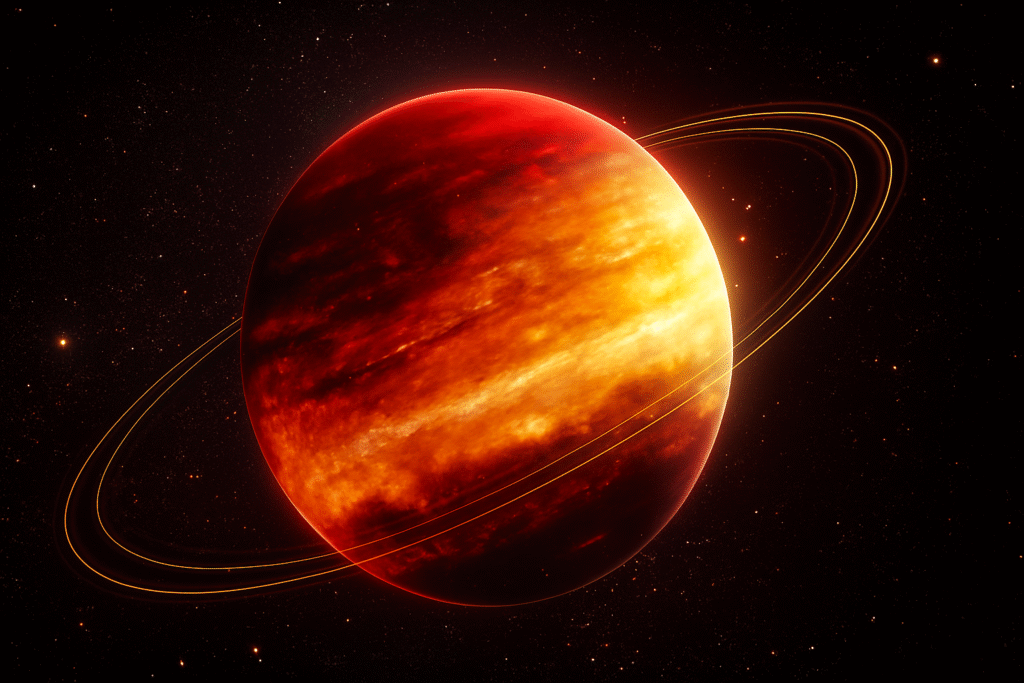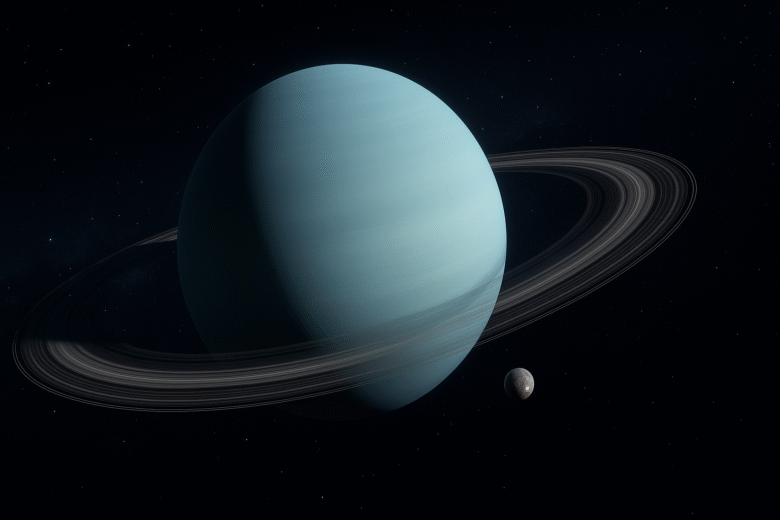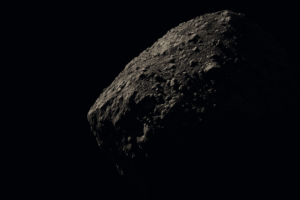Fun fact: Uranus is so tilted that it practically rolls around the Sun on its side—and now, thanks to modern space science, it has one more moon rolling with it.
Every once in a while, space throws us a surprise that feels almost personal—like a reminder that even in a predictable universe, something unexpected is always waiting just beyond the telescope’s glare. The latest example arrived in the form of the Uranus new moon discovery, a tiny, 10-kilometre-wide world that managed to stay invisible for decades. Only when the James Webb Space Telescope (also known as JWST), the world’s most advanced infrared observatory run by the National Aeronautics and Space Administration (NASA), turned its gaze toward the icy giant did this little moon finally step out of the shadows.
In this article, we’ll explore how the Uranus new moon discovery happened, why it matters, and what it tells us—not just about a distant planet half a billion kilometres away, but about the hidden surprises still waiting in our own cosmic neighbourhood.
A Moon Hiding in Plain Sight
When NASA launched the James Webb Space Telescope, most people expected stunning images of galaxies, nebulae, and the oldest stars. Few expected it to spot something as tiny and shy as a new moon around Uranus. Yet that’s exactly what happened. The Uranus new moon discovery emerged from routine observations meant to study the planet’s atmosphere and rings. Instead, scientists noticed a faint, moving point of light—consistent across multiple exposures, behaving nothing like background stars.
That “dot” was eventually confirmed as a real moon. It has now been given a temporary identification, and with its discovery, Uranus’s moon count rises to 29.
This is more than just an astronomical update. It’s a reminder that even in our own solar system—mapped, photographed, and studied for decades—we still miss things.
Why Voyager 2 Missed It
If you grew up hearing about the legendary Voyager missions, you might wonder:
How did a spacecraft that flew right past Uranus miss this moon?
Simple. Voyager 2, launched in 1977, was extraordinary, but its capabilities pale in comparison to modern infrared telescopes. Its cameras weren’t designed for picking out faint, tiny objects lost in a planet’s glare. The Uranus new moon discovery was only possible because the James Webb Space Telescope sees in infrared wavelengths, cutting through brightness and spotting small, cold objects with remarkable clarity.
It’s a staggering thought—our technology has now progressed enough to find a moon smaller than many Indian towns.
A Moon the Size of a City
To appreciate the scale, imagine a rocky fragment roughly the size of Jaipur—or perhaps smaller—circling a planet four times wider than Earth. That’s the size of the Uranus new moon discovery. Small moons like these occupy a strange category—they are neither asteroids nor major satellites, but something in between: the quiet custodians of ring systems, the sculptors of dust lanes, the gravitational nannies keeping ring particles in line.
And Uranus, with its complicated ring system and tilted axis, needs all the nannies it can get.
The Secret Life of Uranus’s Ring–Moon System
Uranus isn’t just a planet—it’s a bizarre cosmic experiment. It rotates on its side, its rings are dark and mysterious, and its inner moons are packed tightly together like commuters in a Mumbai local train. In such a crowded environment, even a tiny moon can play a big role.
The Uranus new moon discovery sits between the planet’s inner rings and inner moons. This makes it a “shepherd moon”—a tiny gravitational guide that helps maintain ring structure and prevent particles from drifting outward. Shepherd moons are famous around Saturn, but the Uranus new moon discovery suggests the same phenomenon happens elsewhere too.
This gives astronomers a clearer picture of how rings evolve, how moons share space, and how a delicate balance is maintained over billions of years. Without these moons, ring systems might fall apart or spread chaotically.

Why the Discovery Matters for India
India’s interest in planetary science is growing rapidly. The Indian Space Research Organisation (ISRO)—India’s national space agency, known for cost-effective but high-impact missions—has already shown the world what a determined scientific community can accomplish with clever engineering. Chandrayaan, Mangalyaan, and the Aditya-L1 mission have all proved that India is ready to join global conversations about solar system exploration.
The Uranus new moon discovery is the kind of scientific breakthrough that inspires a generation of Indian students. It shows that exploration doesn’t always mean sending rockets to new planets. Sometimes, it means looking again at old data with new tools. Sometimes, it means questioning assumptions. Sometimes, it means being willing to see what has been hidden in plain sight.
Young astronomers in India now have a fascinating new puzzle: If Uranus had a hidden moon all this time, what else is hiding out there? Could Saturn have more? Neptune? Even Earth’s neighbourhood?
The Bigger Question: What Else Aren’t We Seeing?
The Uranus new moon discovery is more than a celestial census update—it’s a philosophical nudge. If something as large as a 10-kilometre moon can remain unnoticed for decades, what else is lurking in the darkness? Tiny moons, lost asteroids, maybe even dormant comets waiting for a warm push toward the Sun.
Astronomy teaches humility. Humans like to think we have mapped the heavens. But with each new discovery—whether it’s a distant exoplanet or a pebble-sized moon—we are reminded of the limits of our vision. And more importantly, of the vastness of what remains unknown.
A New Chapter for a Forgotten Planet
Uranus spends most of its life ignored in the public imagination. It is neither flamboyant like Jupiter nor iconic like Saturn. It gets none of the glamour of Mars. But the Uranus new moon discovery is breathing new life into its story.
Astronomers are now calling for dedicated missions to Uranus. They want orbiters, landers, atmospheric probes—the works. Because if a tiny moon can go unnoticed, imagine what mysteries lie inside the planet’s blue-green haze, its tilted magnetosphere, its icy moons, or its puzzling rings.
Conclusion
The Uranus new moon discovery is a small finding with large implications. It changes how we see the outer solar system. It challenges what we assume is already known. And it reminds us that exploration is not just about going farther—it’s about looking deeper.
At a time when the world feels noisy, rushed, and distracted, space quietly tells us a simple truth:
There is always more to discover if we care enough to keep looking.
Author’s Note
Some discoveries feel like whispers rather than fireworks, yet they leave a strange echo in the mind. The Uranus new moon discovery stayed with me because it reminded me of how much of life—like the cosmos—is lived in the unnoticed corners. Writing this felt like stepping outside after class, looking at the evening sky, and remembering that curiosity is the only real map we have. We look up not because we expect answers, but because wonder refuses to let us stop asking.
G.C., Ecosociosphere contributor.




